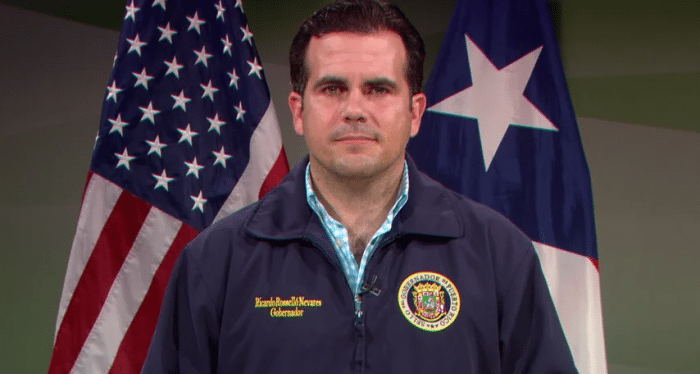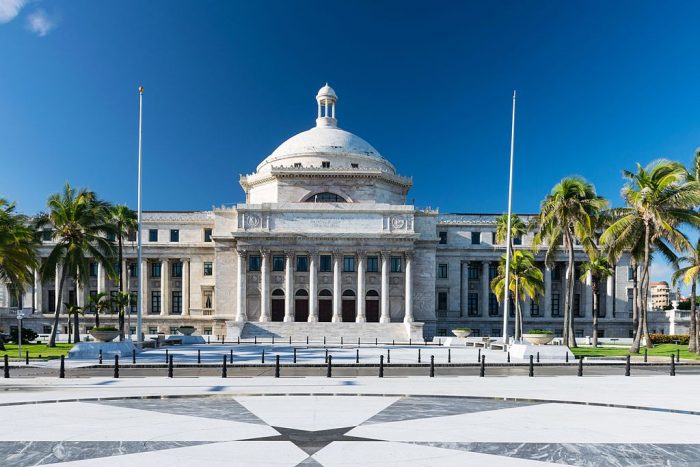

Since Hurricane María left Puerto Rico destroyed, governor Ricardo Rosselló has focused most of his energy on paying bondholders. We are talking about billionaires that would be hardly affected by any moratorium on debt payments until the island recovers.
In every version of his proposed fiscal plan, the one figure that increased with each subsequent draft was his recommended appropriation for debt service, which ultimately maxed out at the staggering sum of $7.3 billion over five years.
The governor is doing exactly the opposite of what Puerto Ricans have been calling for and need: to care for “the people before the debt.” It’s no surprise that the unelected Fiscal Control Board, no friend to Puerto Rico, ratified the governor’s blueprint for paying off Wall Street by approving a still high debt payment allocation of $4.9 billion over the next five years.
Wall Street won the hurricane recovery fight. Their negotiations with Rosselló paid off. That’s why protests in and outside the island will continue
For several years, activists members of Hedge Clippers, joined by unions, have been working with Puerto Rican groups in the mainland and the Island to push for an end to the debt crisis.
Extensive research turned into dozens of published reports on vultures and the debt led us to demand a stop to payments to vulture funds and to the harmful austerity measures. In fact, one of those reports put out by our partner ReFund America Project, revealed that a huge part of Puerto Rico’s debt is illegitimate because nearly half of the debt is interest rate generated through a payday lending scheme.
Puerto Rico’s Payday Loans by Roosevelt Institute on Scribd
As the demands for hurricane recovery funding and debt forgiveness intensified, secretive bondholders have been ousted and pension funds have divested from hedge funds strangling the island for a quick buck. And most recently, students have joined our protests against their university endowments heavily invested in some of these same vulture funds.
Consequently, respected economists and policy makers have declared that Puerto Rico’s debt should be forgiven and some bondholders have made their own calls for cancelling the debt, filing a lawsuit against COFINA bondholders (Puerto Rico’s Sales Tax Financing Corporation), also arguing the debt is illegal. Even President Trump, in a short-lived lapse of sympathy for Puerto Rico’s suffering, said that the debt should be “wiped out.”
Instead of delivering to his people, Rosselló offered vultures a bailout: tens of billions of dollars that Puerto Rico needs to recover will instead pay the debt over the next 30 years. Rosselló recently told reporters that emergency Medicaid —public funding from Congress— will be used to erase balance sheet deficits and provide bondholders a surplus from which to get paid. He is going out of his way to help hedge funds secure lofty profits after they bought the debt at pennies on the dollar.
This latest commitment to bondholders is perfectly consistent with the actions Rosselló has pursued since taking office last year: his policies have shown little concern for the well-being of Puerto Ricans.
Meanwhile, the dire situation is forcing families to flee the island en masse. Just two days before the seven-month mark of Hurricane María ripping through Puerto Rico, the whole island was once again left without power.
The Center for Puerto Rican Studies estimates that Puerto Rico would lose 14% of its population by 2019 or 470,000 people.
School closures, an ongoing foreclosures crisis, poverty wages, and double-digit unemployment will drive more families off the island, and depress the economy even further.


Puerto Rico’s Capitol building (Brad Clinesmith)
Just as the governor was promising tens of billions to his friends in Wall Street, he announced a unilateral decision to close 283 public schools, leaving parents, teachers, students, and local governments out of the decision-making process.
The money “saved” by massive schools closures comes at just 3% of the total payout he promised Wall Street. The 283 school closings are in addition to 150 schools he closed last year. In one year, governor Rosselló will have closed more than ⅓ of Puerto Rico’s schools. He has also closed or sold all but one public hospital.
Whose side is Rosselló on? What is he trying to accomplish by handing the island to investors on a silver platter while destroying the future of the people he was elected to represent?
This week, Puerto Ricans are taking their outrage to the streets of San Juan. They refuse to stand for anymore abuses. I am joining them.
***
Julio López Varona is the Director of Puerto Rico Campaigns with the Center for Popular Democracy and member of the Hedge Clippers Coalition.


